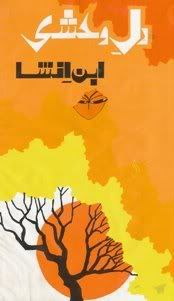I recently got hold of Ibn-e-Insha’s poetry book titled ‘dil-e-wehshi’. Once I started reading it was hard to put it down.


This book is Ibn-e-Insha’s third poetry collection. His first collection ‘chand nagar’ was published in 1955. Second collection was ‘is basti ke ik kooche mein’ which was published in 1976. Unfortunately he did not live long after that and left us forever on January 11, 1978. His third poetry book ‘dil-e-wehshi’ was published by his family in 1985. It contains his unpublished work from his ‘bayaaz’ and that is what makes this book so special. Following are some some selections from ‘dil-e-wehshi’.
Adil Najam
When you write and think deeply about Pakistan every day – and, really, every minute – you become sensitive not only to the great trends of our time but also to the subtle changes in those trends. Sometimes, although never often enough, such change is not only perceptible but positive.

The last few week have witnessed such a change. One cannot be certain yet whether this change is momentary or permanent – indeed, there are many reasons why it could be easily reversed – but it is clear that the combined effect of the displacement of 2.5 million Pakistanis from their homes, the growing immediacy and coming out of the shadows of the threat from extremism, and the forceful military action against militant forces, have had the combined effect of galvanizing Pakistanis. Our criticism of and cynicism for the government, for politics, for international affairs, for anyone and everyone with any power, has not subsided – nor should it – but our Pakistaniness, our Pakistaniat, is much more vividly, more unambiguously, more unconditionally on display.
The future lies in mud architecture. Though this sweeping statement may sound prehistoric, but it is very relevant to modern times. Building living spaces with mud is a tradition dating back to the start of civilizations. Some excellent examples from the Great Mosque – the world’s largest mud building and UNESCO’s World Heritage site to the oldest surviving mud specimens found in the Harappa Pakistan, show the continuation and importance of mud buildings.

Having grown up in a mud house myself (before I moved to urban centre), mud buildings have a special place rooted deep into my cultural consciousness and this personal bond encourages a more intimate relationship between me and the mud as the material transformed from formlessness to form. That is the reason why I am interested in mud architecture and I see its bright future in Pakistan.
























































